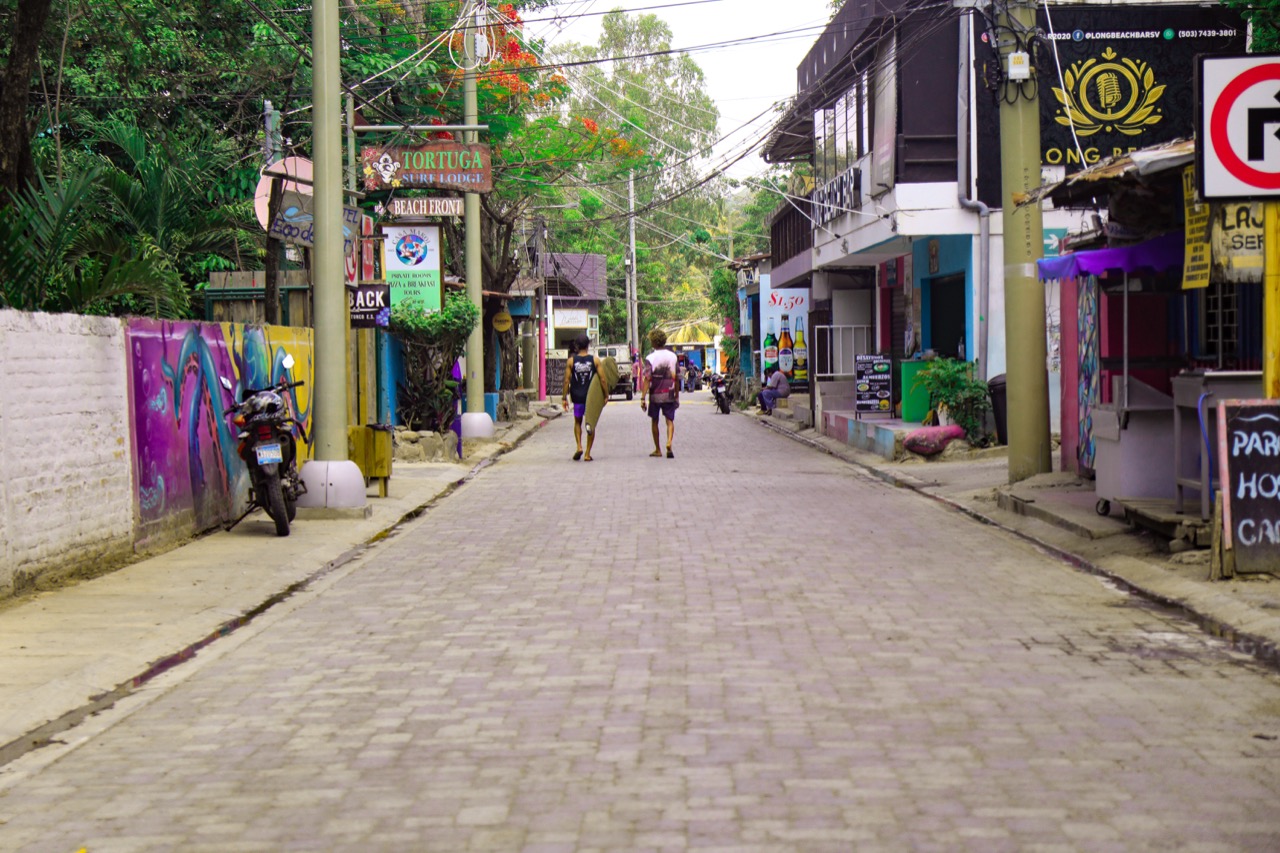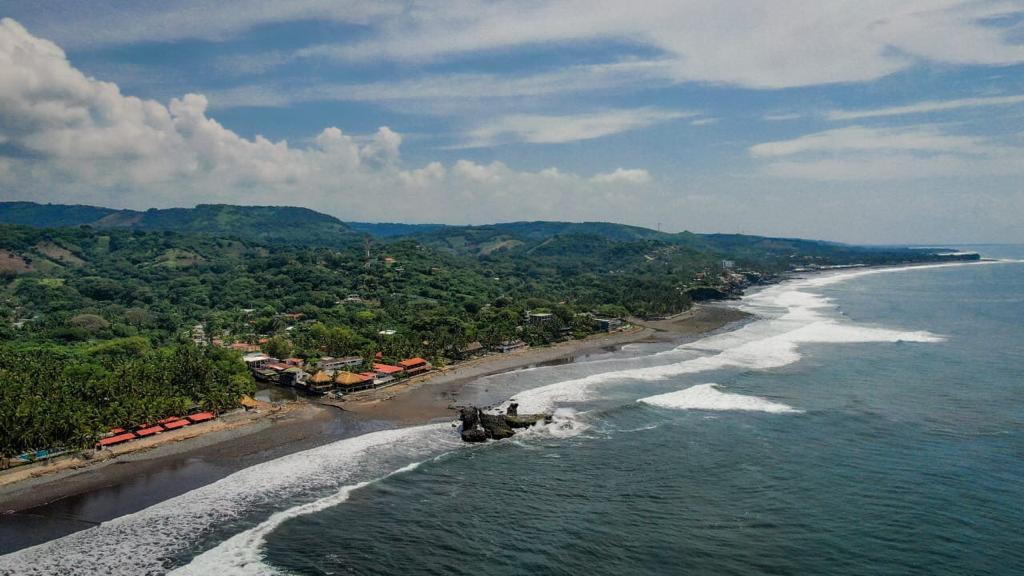Disclaimer:
Please be aware that the content herein has not been peer reviewed. It consists of personal reflections, insights, and learnings of the contributor(s). It may not be exhaustive, nor does it aim to be authoritative knowledge.
Title
Please provide a name for your action learning plan.
Experimenting ways to reduce solid waste at El Tunco beach.
Challenge statement
Challenge type: If you are working on multiple challenges, please indicate if this is your "big bet" or "exploratory" challenge.
Please note: we ask you to only submit a maximum of 3 challenges - 1x Big Bet, 2x Exploratory. Each challenge must be submitted individually.
EXPLORATORY
Challenge statement: What is your challenge? (Please answer in specific terms: "Our challenge is that...”.)
Our challenge is to identify a solution to reduce solid waste at El Tunco beach. The solution should be low cost and scalable.
Background: What is the history of your challenge? What is causing or driving it? Who is involved? How does the current situation look like? What undesired effects does it produce?
El Tunco beach is a very well-known beach in El Salvador, with many visitors, hotels, restaurants, and bars. It also hosts international surfing championships, which makes it even more relevant. Given this scenario, it is necessary to identify innovative, and scalable ways to reduce single-use plastic, solid waste and improve its management.
Globally, and according to the US Environmental Protection Agency (2022), improperly disposed land-based litter, packaging and debris account for 80 % of the aquatic litter found on beaches during clean-ups and surveys. Specifically in El Salvador, a 2018 study on different beaches identified that only 48% of waste is properly collected, the rest is left on local beaches and estuaries (Mendoza, 2018).
In recent years, El Salvador has made efforts to reduce beach littering. In 2022, the Legislative Assembly approved reforms to the Penal Code and the Environmental Law to reduce pollution and harmful environmental practices. These establish that natural persons who throw less than two pounds of rubbish will be fined $20, while those who throw more than two pounds will be fined $1,500. Legal entities will be fined up to $25,000. The Ministry of Environment and the National Civil Police will be responsible for supervising and sanctioning those who do not comply with the provisions (Asamblea Legislativa de El Salvador, 2022). Despite the spirit of the law to protect the environment and reduce solid waste, it is very difficult to enforce this law and apparently not much has changed. In view of this, it is necessary to look for innovative ways to promote waste reduction and improve waste management.
Quantitative evidence: What (official) data sources do you have on this challenge that better exemplifies the importance and urgency of this frontier challenge? You can add text, a link, or a picture.
According to the Ministry of Tourism, El Tunco beach receives more than 260,000 tourists every year, and has more than 90 commercial establishments, including hotels, hostels, restaurants, bars, among others (MITUR, 2021).
Qualitative evidence: What weak signals have you recently spotted that characterizes its urgency? Please provide qualitative information that better exemplifies the importance and urgency of this frontier challenge. You can add text, a link, or a picture.
In a field visit to El Tunco Beach, our partners for this cycle observed that one of the biggest problems is the amount of waste generated daily. Among them, the predominant ones are disposable plastic deposits, bottles, and cans.
During this visit, they interviewed several people to get their opinion about which problems they perceived as the most serious, and the issue of waste ending up on the beaches was the most mentioned. The amount of uncollected waste generates various problems, affecting not only the ecosystem but also visitors or residents in the vicinity.
Value proposition: What added value or unique value proposition is your Accelerator Lab bringing to solving this challenge? Why is it your Lab that needs to work on this challenge and not other actors within UNDP, other stakeholders in the country respectively? Why is it worth investing resources to this challenge?
This is an exploratory cycle, in which we want to find out if there are quick, low-cost and scalable ways to reduce the problem of solid waste on El Salvador's beaches. This follows the logic of the AccLabs, where we can test without having to be tied to a program or project in the UNDP portfolio.
Short “tweet” summary: We would like to tweet what you are working on, can you summarize your challenge in a maximum of 280 characters?
El Salvador´s Accelerator Lab is conducting a small learning cycle to identify new ways to improve solid waste management on beaches.
Partners
Who are your top 5 partners for this challenge? Please submit from MOST to LEAST important and state Name, Sector and a brief description of the (intended) collaboration.
Please state the name of the Parter:
ESEN, Escuela Superior de Economía y Negocios
What sector does our partner belong to?
Academia
Please provide a brief description of the collaboration.
ESEN is a Business School and we have created a partnership in which a group of 6 students in their final year of Business Engineering will support us in designing and implementing the learning cycle
Is this a new and unusual partner for UNDP?
Yes
Learning questions
Learning question: What is your learning question for this challenge? What do you need to know or understand to work on your challenge statement?
What kind of waste is most abundant on El Salvador's beaches; is most of it due to tourists or to local businesses, such as restaurants and hotels; are there ways in which we can encourage tourists to generate less waste; and are there ways in which we can encourage businesses to generate less waste?
To what stage(s) in the learning cycle does your learning question relate?
Explore, Test
Usage of methods: Relating to your choice above, how will you use your methods & tools for this learning question? What value do these add in answering your learning question?
The data collected from different sources will be visualised in order to identify the locations where waste accumulates the most and, subsequently, to be able to identify the majority of waste and other important data. The mapping of solutions will identify viable alternatives that other actors have considered to improve waste management or to reduce the amount of waste. Finally, a Design Thinking process will be followed to come up with ideas for possible solutions.
Existing data gaps: Relating to your choice above, what existing gaps in data or information do these new sources of data addressing? What value do these add in answering your learning question?
There is currently no official data on the quantity, type and accumulation points of waste on Salvadoran beaches. This exercise will use drones to identify waste accumulation points, and then use a sampling methodology to collect, classify and weigh all the waste found, in order to answer important questions such as: what is the predominant waste, where does it come from, does it come from tourists or businesses, and so on.
In addition, the distance between each litter bin on the beaches will be measured and geo-referenced to identify if there is a relationship with the places where there are litter bins, the distance between the litter bins and the points of accumulation of litter on the beaches.
Closing
Early leads to grow: Think about the possible grow phase for this challenge - who might benefit from your work on this challenge or who might be the champions in your country that you should inform or collaborate with early on to help you grow this challenge?
The results of this exercise can be very valuable for tourism-related entities such as the Ministry of Tourism (MITUR), and even for private actors such as hotel and restaurant owners. Additionally, this will be of great value to the Ministry of Environment and Natural Resources (MARN).
END OF ACTION LEARNING PLAN: Thank you! The form saves automatically and your submission has been recorded. You may now exit this window.


 13Climate action
13Climate action

 14Life below water
14Life below water 17Partnerships for the goals
17Partnerships for the goals
Comments
Log in to add a comment or reply.